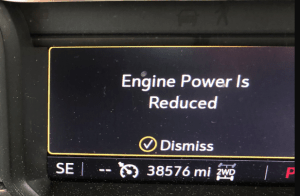Dodge challenger “Takes Step Up With Wider Tires”
The Dodge Challenger is a classic American muscle car that has been in production since 1970. Its bold design, powerful engines, and impressive performance have made it a popular choice among car enthusiasts.
The Challenger is known for its aggressive stance, powerful engines, and its ability to provide a thrilling driving experience.
When it comes to performance, one of the most important factors to consider is the width of the tires. Tire width plays a significant role in how a vehicle handles, accelerates, and brakes.
Wider tires provide more contact with the road, which results in improved traction and handling. This can be especially beneficial for muscle cars like the Challenger, which are known for their high speeds and powerful engines.
However, it’s important to note that wider tires also have some drawbacks, such as increased wear and tear, and the need for more frequent rotations and alignments. Therefore, it’s important to carefully consider the pros and cons of upgrading to wider tires before making a decision.
Factors to Consider When Upgrading to Wider Tires
Vehicle weight and power:
The weight and power of the vehicle are an important factors to consider when upgrading to wider tires. Wider tires are able to handle the increased weight and power of a vehicle, such as the Dodge Challenger, better than narrower tires. This is because wider tires provide more contact with the road, which improves traction and handling.
Suspension and alignment:
Upgrading to wider tires can also affect the suspension and alignment of the vehicle. Wider tires can put more stress on the suspension, which can lead to increased wear and tear on the components. It’s important to make sure that the suspension and alignment are in good condition and properly adjusted for the wider tires.
Wheel size and offset:
The size and offset of the wheels are another important factor to consider when upgrading to wider tires. The size and offset of the wheels can affect the fitment and clearance of the tires, which can impact the performance and handling of the vehicle. It’s important to ensure that the wheels are the correct size and offset for the wider tires.
Safety and legal considerations:
Upgrading to wider tires can also have an impact on safety and legal considerations. Wider tires can affect the overall dimensions of the vehicle, which can affect the visibility and maneuverability of the vehicle. It’s also important to check local laws and regulations to ensure that the wider tires are legal to use on the road.
Recommended Wider Tire Options for the Dodge Challenger
Comparison of different tire brands and models:
Michelin Pilot Sport 4S
This tire has a sporty tread pattern and is designed to provide excellent grip and handling. It’s available in a variety of widths and is a popular choice among muscle car enthusiasts.
Pirelli P Zero:
This tire is designed for high-performance vehicles and offers excellent grip and handling. It’s also available in a variety of widths and is known for its longevity and durability.
Goodyear Eagle F1 Asymmetric 3:
This tire is designed for high-performance vehicles and offers a good balance of performance and durability. It’s available in a variety of widths and has a unique tread pattern that provides excellent grip and handling.
Pros and cons of each option:
Michelin Pilot Sport 4S: Pros– Excellent grip and handling, long-lasting durability. Cons- Expensive
Pirelli P Zero: Pros- Excellent grip and handling, durable. Cons– Expensive
Goodyear Eagle F1 Asymmetric 3: Pros– Good balance of performance and durability, unique tread pattern. Cons– Expensive
It’s important to consider personal preference and budget when choosing a tire for the Dodge Challenger. It’s also recommended to consult with a professional mechanic or tire specialist for guidance and recommendations.
Information on tire width, tread pattern, and performance characteristics:
Tire width:
It is recommended to upgrade to a tire width that is at least one inch wider than the original tires. For example, if the Challenger originally comes with 245mm tires, upgrading to 255mm tires would be a good option.
Tread pattern:
A sporty tread pattern is recommended for the Dodge Challenger as it provides better grip and handling than a traditional tread pattern.
Performance characteristics:
Wider tires provide better traction and handling, which is important for high-performance vehicles like the Challenger. They also provide better stability and braking performance.
Installation and Maintenance of Wider Tires
Step-by-step instructions for installing wider tires on the Dodge Challenger:
- Step 1: Loosen the lug nuts on the wheels before raising the vehicle using a jack or lift.
- Step 2: Remove the wheels and the existing tires from the vehicle.
- Step 3: Carefully inspect the new tires for any damage or defects.
- Step 4: Mount the new tires onto the wheels, making sure they are seated properly and balanced.
- Step 5: Place the wheels back onto the vehicle and tighten the lug nuts.
- Step 6: Lower the vehicle and fully tighten the lug nuts with a torque wrench.
- Step 7: Have the alignment checked and adjusted as necessary.
Tips for maintaining and caring for wider tires to ensure optimal performance and longevity:
- Regularly check the tire pressure and keep it at the recommended levels.
- Rotate the tires every 6,000 to 8,000 miles to ensure even wear.
- Have the tires balanced and aligned on a regular basis.
- Avoid overloading the vehicle as it can cause excessive wear on the tires.
- Avoid extreme heat or cold temperatures as they can cause damage to the tires.
- Avoid driving on rough or uneven surfaces as it can cause punctures or other damage to the tires.
- Clean the tires regularly and inspect them for any signs of damage or wear.
- Consider installing a set of winter tires during the cold months to prolong the life of your tires.
By following these tips and recommendations, you can ensure that your wider tires perform at their best and have a long service life. Remember, it’s important to consult with a professional mechanic or tire specialist for guidance and recommendations.
Conclusion
Summary of the benefits of upgrading to wider tires on the Dodge Challenger: Upgrading to wider tires on the Dodge Challenger can provide several benefits including improved traction, handling, and braking performance.
Wider tires can also help to improve the overall stability and safety of the vehicle. Additionally, wider tires can enhance the overall appearance of the Challenger, giving it a more aggressive and sporty look.
Final recommendations for choosing the best tire option for your specific driving needs and preferences:
When choosing the best tire option for your Dodge Challenger, it’s important to consider your specific driving needs and preferences. Some important factors to consider include the type of driving you’ll be doing (e.g. track driving, daily commute), your budget, and the tire’s performance characteristics.
Based on the information provided in this blog, the Michelin Pilot Sport 4S, Pirelli P Zero, and Goodyear Eagle F1 Asymmetric 3, are all great options for high-performance vehicles like the Challenger. However, it’s always best to consult with a professional mechanic or tire specialist to get the best advice for your specific vehicle.
FAQs about dodge challenger wider tires
Can I fit wider tires on my Dodge Challenger?
Yes, you can fit wider tires on your Dodge Challenger as long as they are within the recommended tire size range for your specific model and year. It is important to consult your owner’s manual or consult with a professional to ensure proper fitment.
How much wider can I go with the tires on my Dodge Challenger?
The amount of width you can go with your tires on your Dodge Challenger will depend on your specific model and year. It is recommended to consult your owner’s manual or consult with a professional to determine the maximum width that can be safely used.
Will wider tires affect my Dodge Challenger’s performance?
Wider tires can have an impact on your Dodge Challenger’s performance, as they can increase grip and handling capabilities. However, it is important to note that wider tires can also increase rolling resistance, which can negatively affect fuel efficiency and acceleration.
Will wider tires fit the stock rims on my Dodge Challenger?
The fitment of wider tires on the stock rims of your Dodge Challenger will depend on the width of the tires and the size of the rims. It is important to consult your owner’s manual or consult with a professional to ensure proper fitment.
Will wider tires improve my Dodge Challenger’s handling and stability?
Wider tires can improve your Dodge Challenger’s handling and stability by increasing the contact patch and providing better traction. However, it is important to note that wider tires can also increase rolling resistance and negatively affect fuel efficiency and acceleration. Therefore, the decision to use wider tires must be well thought out.



